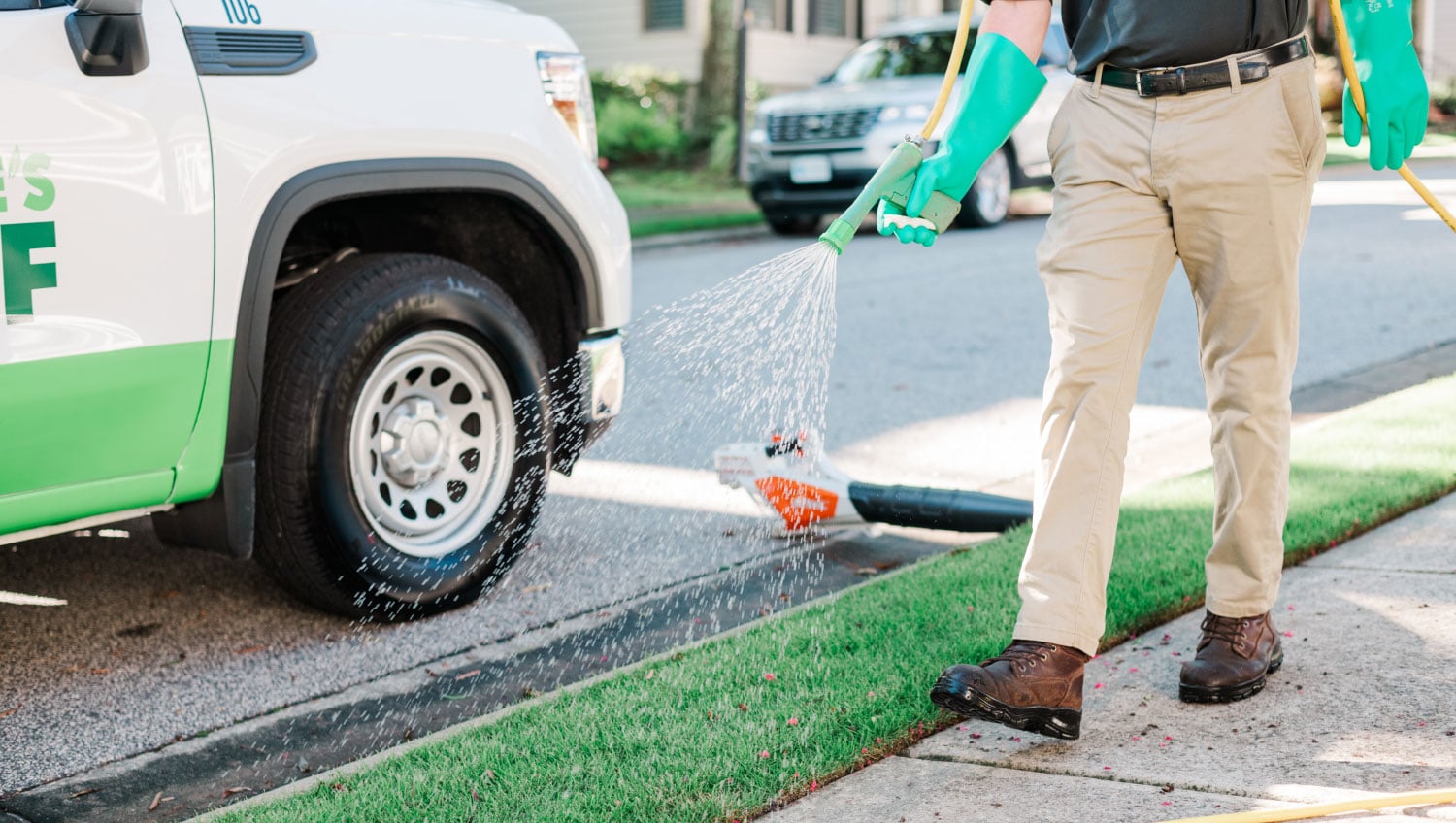As one of the most common weeds in our lawns, crabgrass is everywhere in the spring and summer months. It’s so common that other grassy weeds are often mistaken for crabgrass because its presence is so probable. Classified as a grassy, summer annual, its texture can contrast that of our desired turf types. The many species, of which we most regularly encounter Large and Smooth, are native to Eurasia and were intentionally introduced in the 1800s as a forage crop for its resiliency in warm, dry conditions. Since importation, crabgrass has continued to spread throughout North America and is one of the most impactful weeds worldwide. Read on to learn about why crabgrass appears in lawns, how you can get rid of crabgrass, and what you can do to prevent the spread of crabgrass.

Why Do I Have Crabgrass?
Weather conditions in the Atlanta area are favorable to the growth of crabgrass. In Atlanta, crabgrass is everywhere, and that probably includes your yard. Requiring very mild germination conditions, crabgrass often arrives early in the spring season and becomes more difficult to control as it ages. Each crabgrass plant is capable of producing an exceptional number of seeds, affecting the area where present and also spreading to adjacent areas.
Crabgrass (and other weeds for that matter) can be introduced in a number of ways: passively, by animals and humans, and on maintenance machinery.
Passive ways include natural methods such as water and wind carrying the seeds from the parent plant to a new location. Animals can carry weed seeds from one yard to the next on their paws or fir, and humans can move them around on the bottoms of their shoes.The most commonly overlooked method of weed seed movement is on maintenance machinery. The blades and decks of mowers and the heads of maintenance equipment such as weed eaters are perfect places for seeds to be moved from one part of a yard to another or from one yard to the next.
The large number of seeds: creates new plants and increases the potential for resistance when combined with the overuse of any weed control product. If a single active ingredient is used too frequently, the product likely will find individual crabgrass plants that aren’t injured by it. Those plants then seed prolifically, and a population arises that is no longer affected by that weed control product. While we, at Nature’s Turf, use available tools responsibly, the possibility of running into crabgrass that is unresponsive to industry available controls is present, and if that happens, we adapt accordingly.
How Do I Get Rid of Crabgrass?
Partner with Nature’s Turf or a trusted lawn care company that services your area. Purposefully selected and timed pre-emergent applications are fundamental to the suppression of crabgrass. While each of the points mentioned below are important, they are most effective when combined with a well-formulated program. We give your yard access to the highest quality pre- and post-emergent products applied by well-trained professionals.
Limit the opportunities for mobility. Ensuring that your lawn is cut with clean equipment will reduce the potential for unwanted plants to be spread to your property. Whether this means washing your own equipment or confirming that your maintenance company does, cleaning reduces the possibility of new weed introduction greatly.
Mow often enough to maintain plant health and density. Warm season turfs such as bermuda and zoysia should be maintained at:
- a cut-height of 1.5-2”
- when the frequency of cut is 7-10 days
By yielding a small amount of clippings frequently, damage is minimized, and lateral growth is encouraged. The result is a dense, beautiful lawn that shades the soil surface and vigorously competes with newly germinated weeds.
Crabgrass requires light to germinate. Maintaining density reduces the amount of light reaching the soil surface. It’s also important to strategically time a spring scalp of your bermudagrass if you intend to do so. If done too early, the increased light and warmth at the soil surface can result in crabgrass or other weeds earlier than the bermuda can compete.
Water appropriately. We suggest the following watering schedule:
- an inch of water from rain or irrigation per week
- applied over 2-3 non-contiguous days
This watering schedule ensures that your lawn is watered deeply to encourage downward root growth but doesn’t inundate the yard. Similar to mowing and fertilizer applications, the goal is to provide what the turf needs to be healthy without creating situations where thinness results. In wet or cool weather periods, less water may be acceptable, where more may be appropriate when it’s hot and dry, but an inch per week is a good guiding rule of thumb.
Important Takeaways:
- Crabgrass is a summer annual, grassy weed commonly found in Georgia lawns. The most common species we encounter are Large and Smooth.
- Its germination requirements are relatively mild, meaning crabgrass can arrive earlier than other summer annual weeds.
- Known for its prolific seeding, crabgrass readily spreads by seed by both natural and mechanical means.
- Teaming up with Nature’s Turf gives your lawn access to a program formulated to resist crabgrass and other weeds when combined with cleanliness, appropriate mowing height and frequency, and sound watering techniques.








